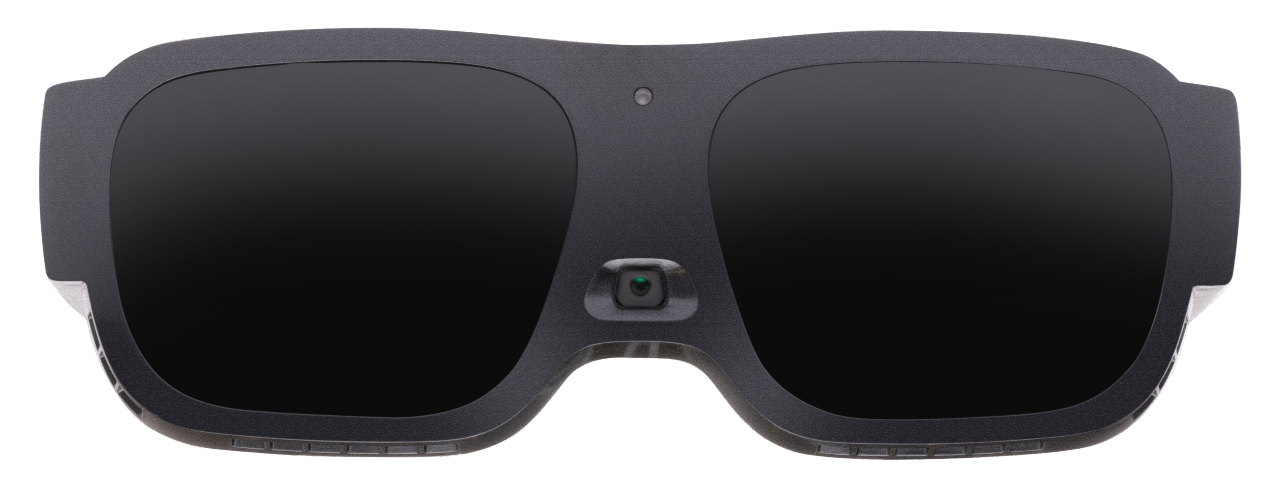Discover Advanced Assistive Instruments for Individuals With Aesthetic Impairments
The landscape of assistive modern technology for people with aesthetic problems is progressing swiftly, presenting a range of ingenious tools that enhance autonomy and involvement. From wise glasses that flawlessly merge aesthetic input with acoustic assistance to innovative navigation applications that redefine spatial understanding, these devices are improving possibilities.
Smart Glasses Innovations
Smart glasses represent a considerable innovation in assistive innovation for people with aesthetic problems. Geared up with cameras and sensors, clever glasses can record real-time visual information, which is then refined and communicated to the individual with sound responses or haptic feelings.
Moreover, improvements in fabricated knowledge have actually even more enhanced the capacities of wise glasses. Artificial intelligence formulas can recognize faces, checked out message, and recognize items, making them vital devices for everyday jobs. Individuals can obtain auditory signs that supply context about their environment, promoting self-reliance and self-confidence.
Furthermore, the ergonomic style and lightweight nature of several clever glasses make them ideal for long term usage, guaranteeing comfort while boosting performance. As these gadgets remain to progress, they hold the possible to change the way people with visual disabilities experience their day-to-days live, bridging the gap in between accessibility and innovation. The recurring r & d in this area promise to broaden the opportunities for smart glasses, making them an essential element of contemporary assistive tools.
Navigating Apps and Equipment
Numerous navigating apps and tools have become crucial resources for people with aesthetic impairments, considerably improving their capacity to traverse unfamiliar environments. These modern technologies utilize general practitioner capability, audio hints, and real-time data to offer customers with specific navigation support.
One famous instance is the Aira application, which connects users to skilled representatives that can provide aesthetic descriptions of environments and navigation support via a live video clip feed. This solution boosts the customer's spatial recognition and self-confidence while browsing. One more significant device is Seeing Eye GPS, which uses voice-guided navigation and points of passion, enabling users to gain access to essential details concerning their environments.

As technology proceeds to advance, the growth of extra sophisticated navigating devices assures to more empower people with visual problems, promoting smooth movement and combination right into diverse atmospheres. Such technologies are important in advertising an extra comprehensive society.
Braille Innovation Advancements
Recently, advancements in Braille modern technology have actually considerably changed how individuals with visual problems accessibility details and engage with the world around them. The growth of portable Braille displays has actually revolutionized analysis by permitting customers to connect wirelessly to smartphones, computers, and tablet computers. These devices transform message right into Braille in real-time, enabling seamless communication with digital content.
Additionally, cutting-edge Braille printers have actually emerged, improving the manufacturing of tactile materials. Modern embossers are much faster and a lot more reliable, permitting for the quick development of Braille files and educational materials. This efficiency decreases the moment and price related to generating Braille sources, making them a lot more obtainable to companies and colleges.
Furthermore, the integration of Braille with other technologies, such as artificial intelligence and artificial intelligence, has actually opened brand-new opportunities for personalized learning experiences. Voice acknowledgment and synthesis innovations can enhance Braille, giving a comprehensive approach to information circulation.
As the need for comprehensive education and learning and work environment settings grows, these technical innovations play an important function in encouraging people with visual problems, guaranteeing they have equal access to details and possibilities in numerous elements of life.
Wearable Tools for Self-reliance
A growing range of wearable devices is enhancing freedom for people with visual problems, offering innovative remedies that improve navigating and everyday living. Braille displays and notetakers. These devices use sophisticated modern technologies to give real-time responses and assistance, advertising autonomy in different environments

Wearable innovation also consists of smartwatches that can be programmed with availability functions, allowing individuals to get notifications, track their locations, and even ask for aid with the touch of a switch. Some tools integrate artificial intelligence to examine the environment, offering audio descriptions of close-by things or people.
Voice-Activated Assistive Solutions
Leveraging voice-activated assistive options has changed the landscape of assistance for individuals with aesthetic problems, offering hands-free communication and access to a variety of tasks. These innovations use natural language processing and expert system to allow users to execute day-to-day tasks with easy voice commands.

In addition, current innovations in voice acknowledgment precision have improved the user experience significantly, suiting varied accents and speech patterns. This inclusivity makes sure that even more individuals can take advantage of these technologies, promoting a higher sense of autonomy.
Conclusion
Finally, the growth of innovative assistive gadgets substantially improves the independence and quality of life for people with aesthetic disabilities. Advancements such as wise glasses, navigation apps, Braille innovation, wearable gadgets, and voice-activated remedies jointly promote a more comprehensive environment. These modern technologies equip users to browse their surroundings with self-confidence and engage even more fully with the globe, eventually promoting better availability and level playing fields for people facing visual difficulties.
The landscape of assistive technology for people with visual problems is progressing quickly, offering a variety of innovative gadgets that boost freedom and interaction.Smart glasses represent browse around this web-site a significant innovation in assistive innovation for people with visual disabilities. As these devices continue to progress, they hold the potential to transform the means individuals with visual problems experience their daily lives, connecting the gap in between availability and innovation.In recent years, advancements home in Braille modern technology have actually substantially transformed how people with aesthetic impairments accessibility details and engage with the world around them. These innovations encourage customers to navigate their surroundings with confidence and engage more completely with the globe, inevitably promoting better ease of access and equal chances for individuals encountering visual obstacles.